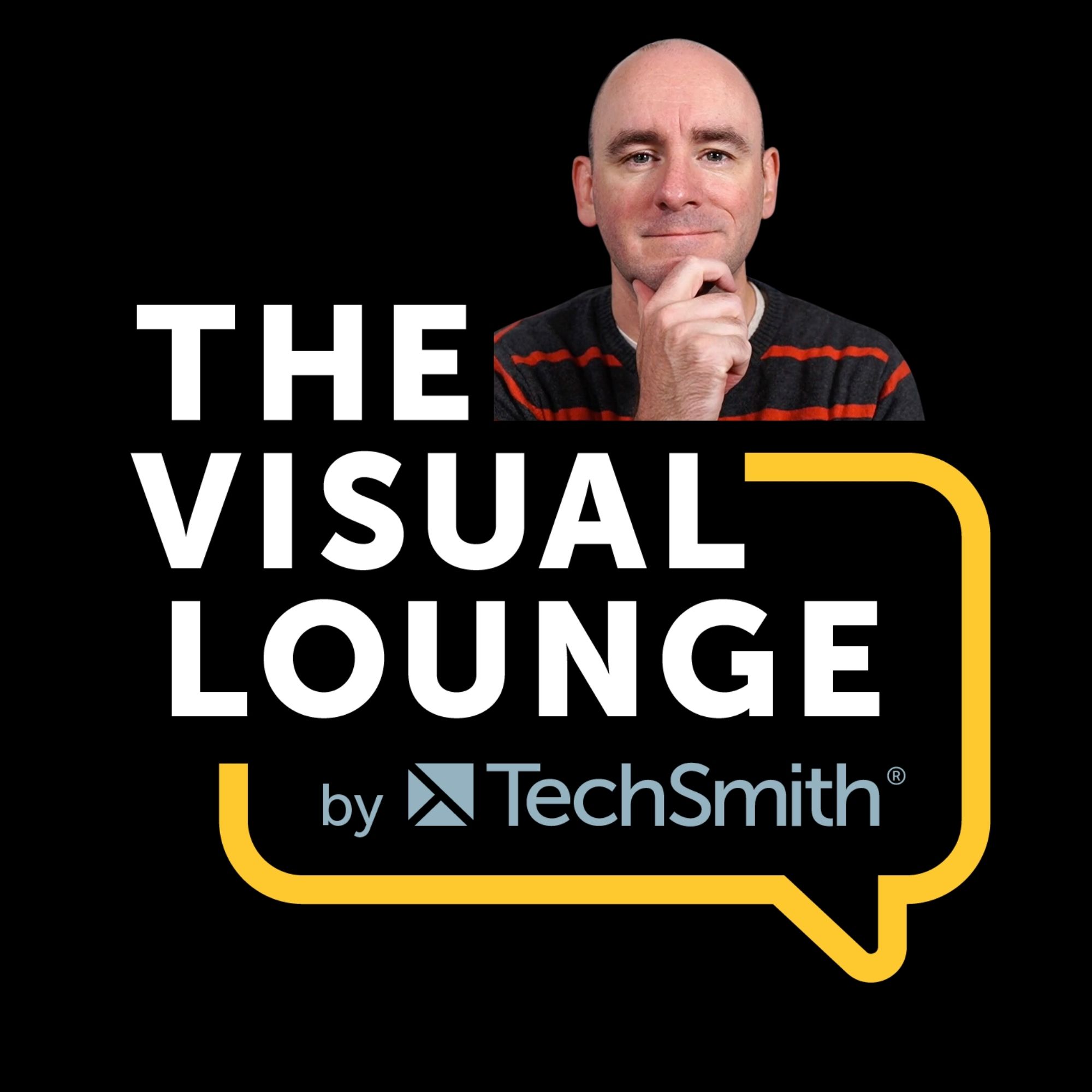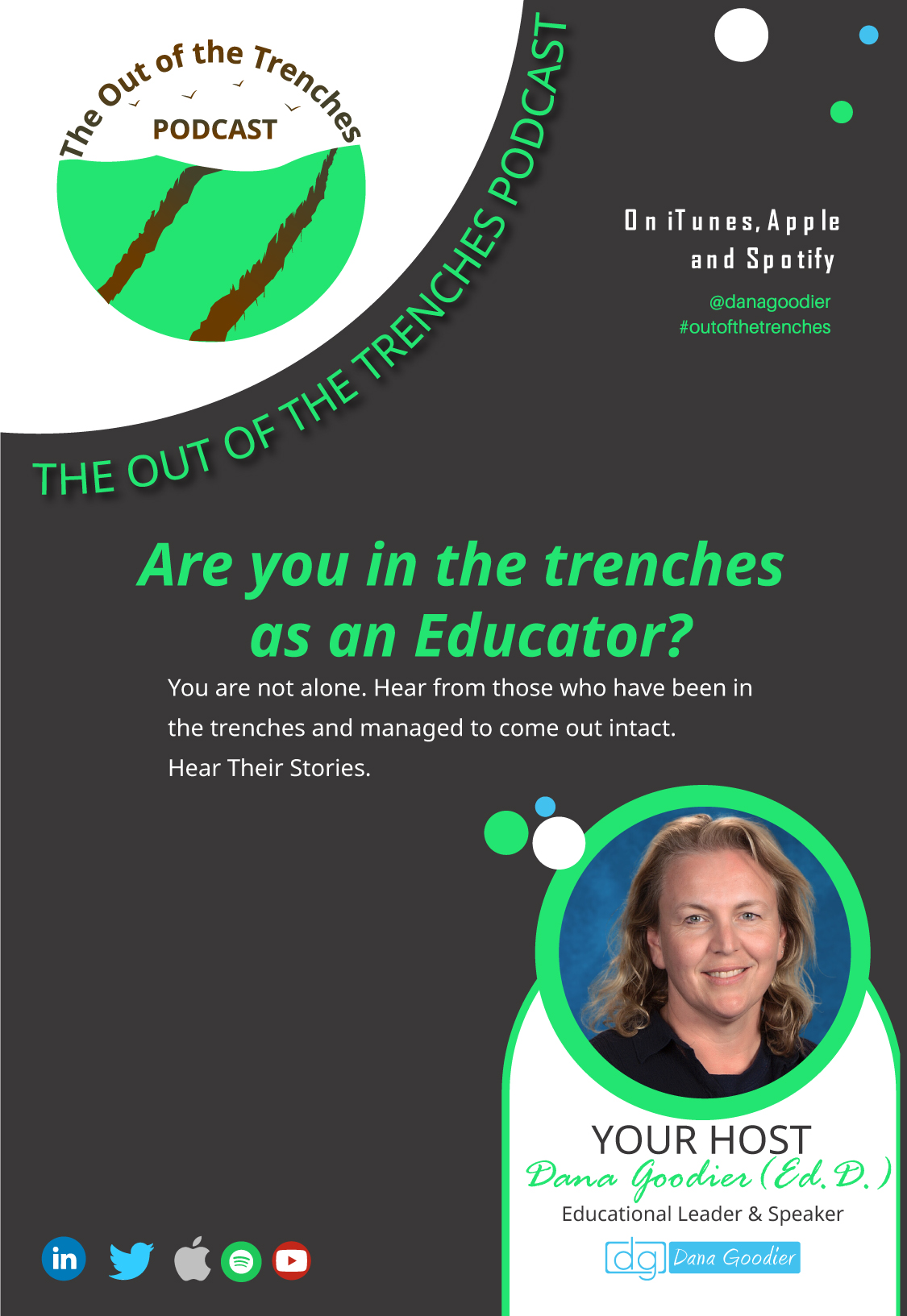
Designing with Love
Hosted by Grand Canyon University (GCU) adjunct instructor and professional instructional designer Jackie Pelegrin, this podcast explores instructional design, e-learning, and how to incorporate AI technology into different aspects of your work. Tune in for expert tips, real-world insights, and inspiring stories from students, alumni, and leaders in the field.
Designing with Love
From Cloud Architect to AI Specialist: Naveen Krishnan's Microsoft Journey
What does the future of work look like when AI becomes your daily assistant? Microsoft AI Solutions Architect Naveen Krishnan offers a compelling glimpse into this reality, sharing how artificial intelligence already handles 30-40% of his daily tasks—and why that percentage will likely reach 70-80% soon.
Naveen's 16-year journey from electronics engineering in India to his current specialized AI role at Microsoft provides valuable context for understanding how rapidly technology careers can evolve. After working with global companies like PepsiCo, JP Morgan Chase, and Capital One, he joined Microsoft in 2021, initially as a Cloud Architect before diving deep into artificial intelligence. His passion for continuous learning—encapsulated in his philosophy that "what I know is just 1% and what I don't know is 99%"—has driven him to write technical blogs, develop AI applications, and even author a comprehensive 350-page book on AI fundamentals and applications.
For instructional designers and educators, Naveen offers practical advice: experiment with AI tools across all aspects of your work now, while the technology is still evolving. He encourages approaching repetitive or time-consuming tasks with the question: "Is there an AI tool that could help me do this more efficiently?" This mindset, combined with staying current on industry developments, positions professionals to thrive in an increasingly AI-enhanced workplace.
🔗 Website and Social Links:
Please visit Naveen's website and social media links below.
Naveen's Technical Blog on Medium
Join PodMatch!Use the link to join PodMatch, a place for hosts and guests to connect.
Disclaimer: This post contains affiliate links. If you make a purchase, I may receive a commission at no extra cost to you.
💟 Designing with Love + allows you to support the show by keeping the mic on and the ideas flowing. Click on the link above to provide your support.
☕ Buy Me a Coffee is another way you can support the show, either as a one-time gift or through a monthly subscription.
🗣️ Want to be a guest on Designing with Love? Send Jackie Pelegrin a message on PodMatch, here: Be a guest on the show
🌐 Check out the show's website here: Designing with Love
📱 Send a text to the show by clicking the Send Jackie a Text link above.
👍🏼 Please make sure to like and share this episode with others. Here's to great learning!
Hello and welcome to the Designing with Love podcast. I am your host, Jackie Pelegrin, where my goal is to bring you information, tips and tricks as an instructional designer. Hello, GCU students, alumni and educators, welcome to episode 33 of the Designing with Love podcast. Today, I have the pleasure of interviewing Naveen Krishnan, an expert in the information technology field at Microsoft. Welcome. I have the pleasure of interviewing Naveen Krishnan, an expert in the information technology field at Microsoft. Welcome, Naveen.
Naveen Kirshnan:Hey, jackie, nice meeting you and your team of podcast, so I'm very glad to see you all and your audience and looking forward to see what you have for me.
Jackie Pelegrin:Great, thank you, thank you. So can you tell us a little bit about yourself, maybe personally and professionally, definitely.
Naveen Kirshnan:So I started my career 15, 16 years back and I started back in India and I worked for a small. I completed my engineering in electronics and communication and then I went into a one-year rigorous course learning all IT systems and programming skills and things like that. So after getting that knowledge, I joined a small startup company back in India and I worked there for a year. We were developing some HR systems and then I moved on to a product-based company so that's an account payable process. So I stayed there for around two, three years maybe, and after that I joined a consulting firm where my customers are UK-based.
Naveen Kirshnan:I worked for Ricoh and I worked for PepsiCo, uk based. I work for rico and I work for pepsico, and then I work for jpmc, capitol one, morgan shanley and delanco so many other customers. So that's where uh, that's what my journey with uh, that consulting company. I shared that for around nine years and then in between I moved to US in 2015. Since 2015, I landed in Dallas, texas, and I'm here still, and I joined Microsoft in 2021, maybe I'm here for the last three years now.
Naveen Kirshnan:Yeah, I do a lot of. I joined as a cloud architect and then I got myself interested into AI and now I'm here as a solutions architect specialized in AI space.
Jackie Pelegrin:Wow, that's great. You've had quite a journey and now you've been here in the United States for 10 years, so that's exciting. Wow. And so you've been at Microsoft three years. Wow, that's great. So you're really seeing AI take off and things like that. So how did you become interested? Did this position at Microsoft just kind of did it land on your lap in a sense, or were you looking, or how did that?
Naveen Kirshnan:come about. No, so my initial days when I was with a consulting firm, I worked for several customers and then we did a lot of cloud migration-related work and that helped me get into Microsoft and the main reason is I was at the center of excellence there and the center of excellence team and I managed a complete azure and I was the first one to get certified as a cloud solutions architect at my consulting company and yeah that. So customer sizes are like very huge. So at some point we design migration of 800 apps and we design migrations or we re-architect, re-factor. I worked on all three or four hours basically restructuring, re-architecting, re-factoring and things like that. So these things helped me get through Microsoft very quick. So that was not easy.
Naveen Kirshnan:A lot of preparation became the scenes and slowly I landed here. And after getting into this role, I still continue to be as a cloud engineer. And after a year or two maybe, I got myself into AI. That's when AI emerged. I won't say AI emerged, but that's when the generative AI stuff came out, and then AI became a talk.
Naveen Kirshnan:And I started learning a lot of things around AI. I went back and then I did a lot of courses around machine learning and deep learning and whatnot Right so? And I got myself into data as well. So in parallel I worked on data as well as AI, so that made me very easy to land here safe, and so for the last one year I went to AI completely. So For the last one year I've been doing AI completely Designing AI applications, helping to build AI solutions, identifying AI use cases and whatnot Everything about AI. I'm writing research papers on AI. I write my own technical blogs on AI completely AI. I do AI podcasts. Yeah, I almost think I'm covering everything.
Jackie Pelegrin:So you're immersed in the AI technology generative AI and all of that and the chatbots and how that can help all the different industries. Because as I read your profile, I was like, wow, this is amazing. So that's so cool. So what's one of the most exciting projects you've worked on at Microsoft where you've utilized AI technology to create personalized learning experiences, maybe for students or for even learners in general?
Naveen Kirshnan:Yeah, sure, so I can talk in general, basically. So there is one other good example which my colleague in UK is working on, so maybe I'll talk about that, so that will be more interesting. So, for example, what they are doing is they are using agents AI agents, basically to completely monitor their cloud infrastructure. So, for example, as we work on IT systems right, so these systems are meant to run 24 per 7. So there is no risk for my apps or my data or whatever. It is right. So there are problems.
Naveen Kirshnan:Sometimes you see issues at midnight and sometimes your application crashes or your database goes down or things like that. So you have to get into a call First, you have to troubleshoot where the problem is and then try to fix those things. So that takes several hours, basically, and there is no proactive approach yet. So, with this help of AI agent implementation, they are automating these end-to-end systems so agents can identify proactively, based on the previous knowledge or data, whatever it has got. So it identifies the problem and proactively senses it and then it tries to remediate by itself with all the list of instructions, what we have provided and the level of control, what it can do, basically, and so once it fixes. It keeps human in loop. So it will just alert someone, like there is something happened and then they fixed it. And if it couldn't, then it will give you the list of steps, what you can perform, which agent doesn't have control to, and then pick you up in the night and then it will just consult with you whether should I take this recommendation and what are the plus and minus if I do this. So, if you just agree, it's going to perform this task for you. So that's the level of automation with agents, what they are planning on. It's a very interesting solution. It may be a very simple use case, but if this gets succeeded in one enterprise, then several of those enterprises may even follow this same thing. So this is one interesting use case, what I recently got from my friend, and apart from that, you can use AI in any of these wherever you can.
Naveen Kirshnan:First, you can think of increasing it, increasing the customer experience, maybe. So, for example, I call my cell phone provider, or there is an effort provider, my entrant is down and I call them and I have to wait for like around 30 minutes to get a technician on my call, because the technician is working on the things that are like a Q&A type of questions. For example, they are loaded with 300 calls at a time and there are only 80 technicians out there and out of 300 calls maybe 200 are just FAQs. So you can just repeat based on the knowledge base. So those types of things heavy lifting can be handled by AI so that other cases, other problems which are really valid, so that can be put into a technician directly. So these types of things where you can start with basically we call it as the AI bot or AI chat bot, anything like that where you can chat with AI and then see if this is an existing problem or a known solution, then AI can fix it for you and if not, it will escalate it to a next level. So you can start there.
Naveen Kirshnan:And with agents, you have automated tasks so we can automate your task basically. So day-to-day tasks for example, I come in and then I read my emails and I, I I kind of figure out how my day is going to be and then I do a lot of analysis on my meetings and what to talk and whatnot. So those types of preparations, they can help them, they can help you and apart from that, it can help write your emails and if you have office respect, uh, all your office 365 is now embedded with Copilot and if you have those capabilities, then it can draft your emails as well. So you don't have to wait, sit, spend an hour to draft those notes. So these are the capabilities, or what I am seeing, and if you are a hard core developer, you can make yourself hit up Copilot.
Naveen Kirshnan:So at least in a IT day to day work, in 30 to 40 percent of my work is now closely with AI. So basically, this 30-40% of my work, ai is my assistant. So that is sitting next to me and then it is assisting for framing emails. If I miss a meeting, it gets my summarization and whatnot. So it's going to evolve soon and then close to 70, 80% of your day on what you do, a is going to be your assistant for those tasks. So this is what I see basically. Maybe it's a lengthy answer, but I think I covered all the pieces.
Jackie Pelegrin:Yeah, that's great. So you're really seeing that AI is becoming that assistant and coming alongside people, right, so that they can take those, as some people call them, mundane tasks, those everyday tasks like writing an email and making it to where it's simpler. And there can be those automated tasks, right, that AI can do. So I love that. I like that idea, too, of the chat bot. I know I've interacted with some chat bots on some websites where it'll help you to see, okay, is this something that's more general that the AI chat bot can help you solve? And then, like you said, if it is something more complicated, then it can go to a live agent and they can help them with it. So it helps to eliminate that a lot of that busy work for them. Probably, so that it it helps to eliminate that, uh, a lot of that uh busy work for them, probably so that they don't have to take calls that they don't necessarily need to take, and then it frees up some of that time as well.
Jackie Pelegrin:Wow, that's amazing. I love that, yeah, cause I used to work in a call. I used to work in a couple of call centers before I worked at um, at Discover Card, which is part of Morgan Stanley and I worked in a call center there in the early 2000s and then that was when we were migrating computer systems. So I just think of wow, if AI was around, then it would have been amazing to have all of that. And then I also worked for Vanguard, which is a financial institution, so it would have been pretty amazing to have all of that, instead of having all these calls come in of general questions where they could have gone to the website right and found that information. So that's great.
Jackie Pelegrin:Wow. So you're really seeing the future of AI, it's really expanding, and that's amazing. Wow, that's wonderful. So it sounds like you're even in a leadership role and what you do too, because you're helping to lead these projects, and so there are different types of styles and skills that you find helpful in your daily work there at Microsoft that you think are really helpful, especially in this type of work you do.
Naveen Kirshnan:Yeah, so usually I don't follow something standard or a specific style, but what I do is I kind of take every opportunity and see how we can be better or good at it. So every chance what you get is learning. So I always have this mindset of what I know is just 1% and what I don't know is 99%. So that always keeps you learning and I don't myself. I don't think that I know everything, so I still don't know anything. So I will keep on hunting and then spend most of my time learning and helping others who are learning, basically so writing some technical blogs and I'm in fact, writing a book on AI.
Naveen Kirshnan:So it is just covers everything, basically so who is just from a different field and then wanted to jump into this and wanted to know more about AI and how it evolved and what is machine learning, what is deep learning and what is neural networks and what is this right? So it kind of covers everything and what is agent and what is the multi-agent system and how do you design that. So it covers end to end. So that book is around. It's getting what you say. The publisher is actually working on it. Once it is out, maybe that will help you land in English. I took that opportunity and after I wrote around 30-40 blocks then I kind of thought, okay, what's next? Then I jumped into it and I started writing my own book.
Jackie Pelegrin:Wow, that's wonderful.
Naveen Kirshnan:This is of making every opportunity for you to grow and evolve. So that's what I do.
Jackie Pelegrin:It's like a continuous learning culture. Right, you're constantly learning because technology is always changing. I was talking to someone earlier about that and we yeah, those emerging technologies are yeah it's amazing that interest.
Naveen Kirshnan:So as soon as you see something new out there, I would say you go try it and then see what's what's in there and then what it can do, so that having that knowledge will definitely help you, help you as well as help others when you share those learnings. So that's one thing, what I do, and apart from that I do a lot of hands on work. So I develop applications, I develop code, and then if there is something which I can automate physically, then I'll try to. I even try to create some games. Is something which I can automate physically, then I'll try to. I even try to create some games for me which I am interested on. So it keeps going. So, yeah, that's how.
Naveen Kirshnan:If you, if you are interested and then if you are eager to do more, then don't hesitate. So this is the right time for you to, because it's just evolved right. So we just crossed only two years of this uh a channel. So if, if you start uh getting uh the grasp of it, then it's like computer, like how you get it got into a computer before when it started, right. So those who don't know how to use computers, so they are now struggling to get into it and start using all their apps and everything. It's a similar thing. So if you try to stay out of it, then you are not going to be part of this and then enjoy the developments, for what will be happening around you.
Jackie Pelegrin:Wow, that's exciting. So when are you planning to?
Naveen Kirshnan:release your book. Is it going to be coming out soon? Got pulled into several other things and then I tried to complete it in spring and it's not possible. And finally, for this summer I have completed and now it's waiting for this peer review and things like that. So once it's all complete, maybe it will be out in two months, maybe.
Jackie Pelegrin:That's good. Wow, so you got it to where you need it. Now it's going through peer review. That's great, wonderful.
Naveen Kirshnan:Yeah, it's a 300-page book, so 350-page book. So it's not easy to get it to a good place and then take it to market. It takes its own time to.
Jackie Pelegrin:That's exciting, wow.
Jackie Pelegrin:Maybe once you get it released you can come back on the podcast and kind of talk a little bit through some of the elements, yeah, and then we can focus on the AI technology and by then, you know, it'll be kind of neat to see how things like you know, because you know most companies have Microsoft already built in, microsoft already built in.
Jackie Pelegrin:So we're at first, when we had Microsoft and where I work at our company, the copilot was disabled. But now they've got copilot enabled and I'm seeing it embedded in everything. So it's really neat to see that it's in Outlook and it's in Word and all of that. So it's pretty neat to see that it's there and it's a good assistant, because we do have an internal tool. But they say that Copilot is safe to use within the organization as well. So it's nice to know that we have options and that we don't have to use an external tool that potentially could have proprietary information that could get out there, because we don't want that. So it's great to have Copilot embedded into all of Microsoft now. So it's great.
Naveen Kirshnan:You can also do it in the work mode, so that if you need to know about any policy information whether what is my insurance plan and things like that you can ask it. So it will be within your company. So instead of waiting for HR to respond back and that takes a day and instead of that I use it if I need to know some policy information of whether I can share this or not and what, so you can get all this from the work mode.
Jackie Pelegrin:Oh, wow, that's good to know. Wow, I love that it's.
Naveen Kirshnan:M365 for pilots and we can just install it and make this office so that is integrated with your complete Office 365 ecosystem. So spreadsheets, sharepoints, excel, word. Solve it and make this so that is integrated with your complete office system. So spreadsheets, sharepoints, excel, words and your enterprise data which you have access to. Basically, what it uses is on behalf of access, so, which means whatever access you have, it takes that level of access and then it go find data which is related to you and which is accessible.
Jackie Pelegrin:Oh, wow, that's one thing. That's amazing. I love that. Wow, I'll have to pass that on because I know our IT. They check, you know, all the different systems and internally and as things get released out. So yeah, so I'll have to look into that. And Microsoft recently went through an update I think it was Friday, so yesterday. So I'll have to check into that, yeah definitely.
Jackie Pelegrin:Yeah, that's great. So, as you know, my students are mostly instructional design students, but I also have novice instructional designers. I have listeners from all over the world, which I never expected with this podcast, but so there's. Are there any tips and advice you can share with those who are currently in the master's program and instructional design at Grand Canyon University that maybe are thinking of utilizing AI technology or they're not sure where to start when it comes to learning and and and those types of areas?
Naveen Kirshnan:Yeah, sure. So what I would say is it's better to try AI in all aspects of what you are doing. So because the future for next two, three years it's completely going to be AI and you will see a lot of developments around AI, a lot of things happening around AI, and so this is the right time for you to grasp and then learn stuff, what's out there, and make use of all the tools.
Naveen Kirshnan:There are plenty of tools that's available out there. So make use of all the tools for whatever you're doing and if you're making designing right. So, for example, I see I don't remember the name so there's a website called Napkin AI, I think so. So you just fill in your text content, it can update an image for you, design for you, whatnot? So there are several tools and things that's available. Make use of all the tools.
Naveen Kirshnan:So, whenever you get stuck somewhere and then you're doing some tedious job like it takes five days or ten days then first thing that comes to my mind comes to your mind is whether can I leverage it? Is there any tools that's readily available which can do all this instead of me doing it manually? So ask this question every time when you get into such a difficult task or anything. So there are plenty of tools available. Only thing is you want to explore something and then figure out which tool fits best for you for all your needs. Make use of those tools, liberate them as and when needed and keep yourself updated on all the trends that's happening and new innovation that's coming out. Just watch and eye on it and follow people who are at C levels on all these big companies so that you know what is coming out, so which feature or what development is happening around there. So follow them and then read them, read what they have been, so keep yourself updated. So keep yourself updated. So that's a recommendation, what I would say at this time.
Jackie Pelegrin:Right, that's great. Yeah, just keeping yourself up to date on the technology and knowing what's out there, right, that's that's great. Yeah, because there are definitely, I agree, a lot of tools out there and it's hard sometimes for us to know what's, what's going to be a good tool and not, um, but you know, even maybe, like you were kind of mentioning, kind of experimenting right with those tools and seeing will it work or will it not, because you don't know right until you try it and see how it's going to work and I yeah, I've done that before, I've tried something, and I'm like I don't know, but it seems like the text to image is getting better than what it used to be.
Jackie Pelegrin:It used to be where I had some students do that and it was so obvious that it was an AI image. I was like, wow, the hands don't look right on the person and the eyes look off. But now it seems like it's much better.
Naveen Kirshnan:I had another student that did that. Yeah, it's far better now. Yeah, it's good, I love it.
Jackie Pelegrin:So I use that for my book session. So okay, so check that out, that's cool. Yeah, I had a student that used um, adobe um for hers and she did a presentation and all of the images were ai generated images and I was like, wow, they look so realistic. I'm like that's, that's amazing, it's come. It's come a long way.
Jackie Pelegrin:I think they keep improving the technology and even with the machine learning right and the AI generation and how it's able to kind of pick up on your tone and your style of how you're doing things I've noticed that with chat, gpt it's gotten better Copilot's gotten better with that and recognizing that, okay, this is the tone that you want and I can kind of pick up on that. And then you don't have to tell it so many things or ask it so many things, that what you need, it can really pick up on that tone and that that voice that you're looking for as well. So it's really great and having that conversation with the AI and no, this isn't quite right, this is where I wanted to go. And then it can shift and it can say, okay, I'm sorry, I was wrong, let me change it. So it's kind of neat how it can do that.
Jackie Pelegrin:Yeah that's great, wonderful. Thank you, naveen. Is there any other thoughts or ideas you'd like to share before we wrap up?
Naveen Kirshnan:So what I would say is follow me on LinkedIn, so it's N-A-V-I-N-T-K-R, so that's my LinkedIn handle, and so that's my LinkedIn handle, and that's my GitHub handle as well. And if you wanted to read my blogs, then I would say AI with Navin Krishnan. I write on mediumcom, and if you wanted just one spot that you wanted to know all about me and what I'm doing is my website, so it's navinkrishnanai. So I have all my podcasts there, all my blogs there. I have wherever. If there is a, if there is a talk which I'm being one of my presenter or anything, I'll update it so you can always follow me there as well.
Jackie Pelegrin:Great, wonderful. I'll make sure to put those links in the show notes for everybody so that way all of my listeners can can go there. It's really nice to have those show notes there, so I'll make sure to link that in there and then when this podcast gets released, then I'll give you the link to that and then that way you can have that as part of your your library and your collection as well.
Jackie Pelegrin:So it's always good to share that knowledge across the board. So that's great. I'll make sure to do that as well. Great, well, thank you so much, naveen. I appreciate all your expertise and your insight into AI technology and how it's changing across all industries in healthcare, education, finance, everything. It's touching all industries, so it's great to have you on and to talk about how things are evolving and changing.
Naveen Kirshnan:I appreciate it Same here, Chakri. Thank you very much. Thank you Glad to meet you and your audience. We'll stay in touch, thank you.
Jackie Pelegrin:Thank you Appreciate it. Thank you for taking some time to listen to this podcast episode today. Your support means the world to me. If you'd like to help keep the podcast going, you can share it with a friend or colleague, leave a heartfelt review or offer a monetary contribution. Every act of support, big or small, makes a difference and I'm truly thankful for you.
Podcasts we love
Check out these other fine podcasts recommended by us, not an algorithm.

Buzzcast
Buzzsprout
Podcasting Made Simple
Alex Sanfilippo, PodMatch.com
The eLearning Coach Podcast
Connie Malamed: Helps people build stand-out careers in learning design.
Dear Instructional Designer
Kristin Anthony
The Visual Lounge
TechSmith Corporation
Wake Up the Lions!
Rory Paquette
Seven Mile Chats
Julia Strukely
Revelations with Cole Johnson
Cole Johnson
The Way I Heard It with Mike Rowe
The Way I Heard It with Mike Rowe
The KAJ Masterclass LIVE
Khudania Ajay
Book 101 Review
Daniel Lucas
LOVE Letters
Daniel Lucas
Mental Health 101
Daniel Lucas/G.Mick Smith
Movie 101 Review
Daniel Lucas And Bob LeMent
Abstract Essay
Daniel Lucas /Sal Cosenza
The Talking Silkworm Podcast
Talking Silkworm
Daniel Bernabe. Daily Inspirational Quotes.
Daniel Bernabe
Relatable Wisdom
Wisdom
My Podcast Story
Wisdom
The Out of the Trenches Podcast
outofthetrenches
Conversations with Rich Bennett
Rich Bennett
The WallBuilders Show
Tim Barton, David Barton & Rick Green


